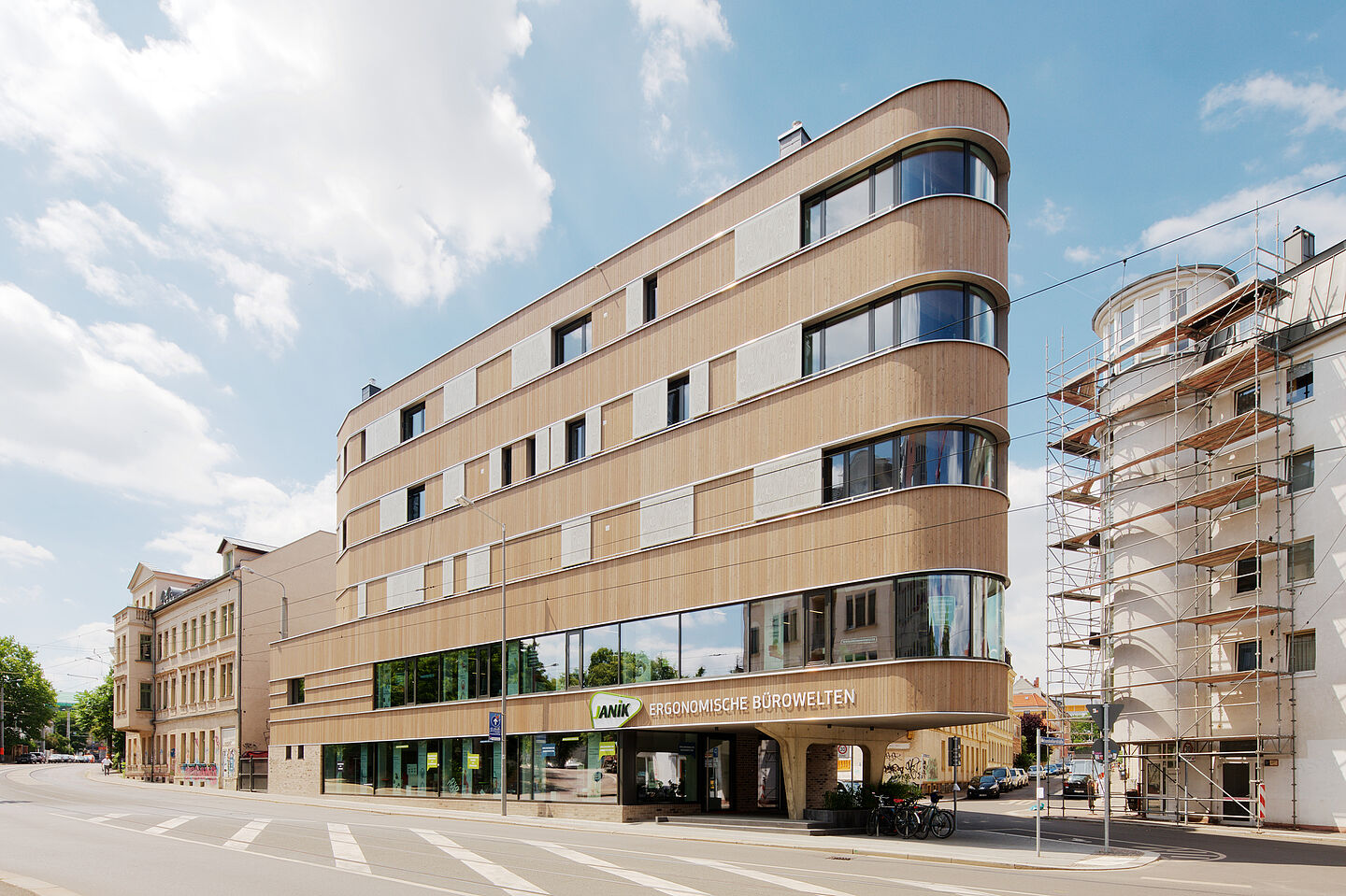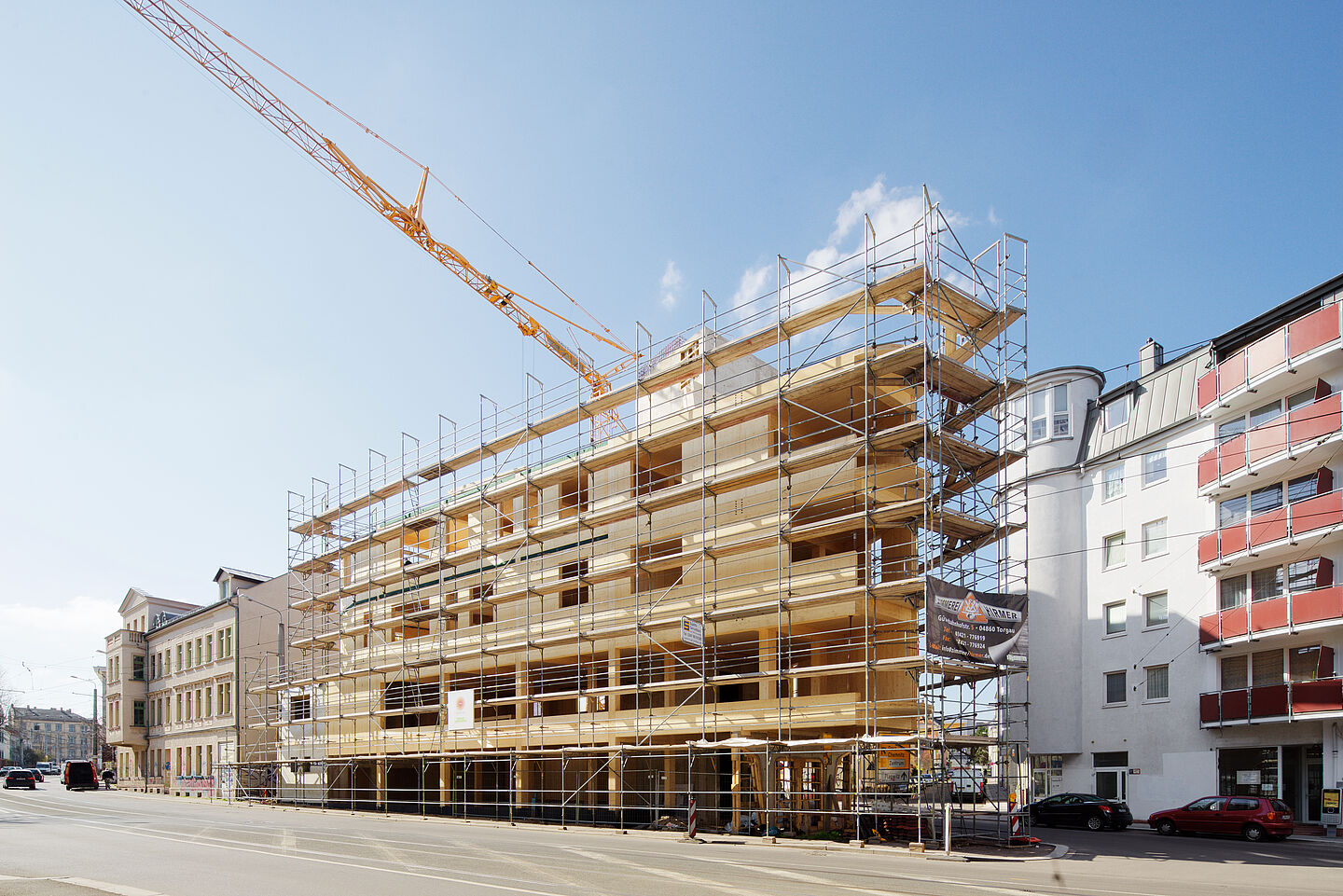Serviceability and comfort of dynamically loaded timber structures in urban multi-storey buildings
Motivation
New innovative timber construction products, above all the highly resilient cross laminated timber and modern joining techniques, are opening up new possibilities for building in urban environments. Multi-storey buildings can be constructed entirely in timber.
At the same time, the housing boom in large cities is increasing the pressure on available plots of land. In addition to closing gaps between buildings, land in the immediate vicinity of transport infrastructures is also being considered.
There is also a Europe-wide trend towards ecological construction methods and sustainable materials, which means that timber as a building material is increasingly becoming the focus of builders and planners due to its outstanding properties.
These factors imply that in the coming years, multi-storey timber structures will increasingly be planned in areas affected by traffic-related vibrations. At present, however, there are few sets of rules and few sufficiently precise and practicable methods for vibration and vibration prediction. This complicates the economic realisation in the planning and execution phase.
Multi-storey timber building in Leipzig Lindenau (Photo: Peter Eichler Fotografie Leipzig).
The 5-storey residential and commercial building at Felsenkellerstraße 1 in Leipzig is a solid timber construction and has won several awards. Among other things, it won recognition from the Association of German Architects - BDA, the Saxony Timber Construction Prize 2019, 3rd place in the KfW Award as an ‘Urban Cake Piece’ and the Saxon State Prize for Building Culture 2019.
Design / Planning: ASUNA - Atelier for strategic and sustainable architecture
Structural design: HÜLS INGENIEURE timber structures
Objectives of the research project
As part of the project, new practice-oriented methods are to be developed that enable planners to economically design multi-storey timber structures in accordance with modern comfort requirements and to make precise predictions about the vibration behaviour. Specifically, planners are to be supported with the following questions:
- What influence do route distances, soil parameters, rail traffic types and other circumstances have on the vibration behaviour of multi-storey timber structures?
- How can timber structures be designed to improve the required comfort properties and comply with applicable regulations?
- Can the serviceability and comfort of a timber structure close to a roadway already be assessed by structural engineers?
- When is it advisable to seek support from specialist planners for vibration issues in the construction industry?
Procedure
In order to enable a qualified prognosis of vibrations and oscillations in multi-storey timber buildings, the first step is to measure the actual vibrations and oscillations that occur. Based on the measurement data, it is possible to use classical modal analysis and system-theoretical methods to identify transfer functions and models that can be used to comprehensively and effectively predict the vibration behaviour of new timber buildings.
Furthermore, the influence of previously non-standardised influencing variables, such as edge restraints of ceiling panels and different fasteners, on the dynamic behaviour of the load-bearing structure is to be investigated by means of measurements in the building condition and laboratory tests.
Publications
Conference papers and scientific presentations
- Comparison of classical modal identification with modern efficient methods of system identification; M. Breitkreuz; D-A-CH doctoral colloquium of the DGEB (German Society for Earthquake Engineering and Structural Dynamics); 2019; Weimar.
Articles mit Peer-Review


